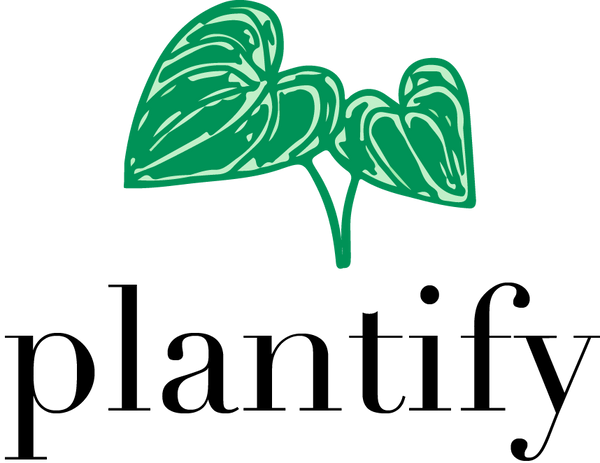WHAT IS TERRARIUM?
A terrarium is a sealed or partially enclosed container designed to create a controlled environment for plants. The container can be made of glass or plastic and is designed to mimic a natural habitat for the contained organisms. Terrariums often have a lid or cover that helps maintain humidity and moisture levels within the enclosure.
Terrariums can come in various sizes and styles, ranging from open containers with a few plants to fully enclosed ecosystems. They are popular for decorative purposes and are often used as indoor plant displays. The closed nature of some terrariums creates a self-sustaining environment where the water cycle is regulated through condensation and evaporation, reducing the need for frequent watering.
Join our Workshops to learn more about terrariums and create one for yourself.

CARE INSTRUCTIONS
Light:
Keeping a terrarium in a well-lit area without direct sunlight is generally a good practice, as it helps create a stable and controlled environment for the plants inside. Here are some key points to consider:
Indirect Light: Terrariums typically contain plants that thrive in moderate light conditions, such as ferns, mosses. Placing your terrarium in a location with indirect sunlight or filtered light, like near a north or east-facing window, is ideal. This provides the plants with the light they need without the risk of overheating or scorching.
Avoiding Direct Sunlight: Direct sunlight can be too intense for the plants within a closed terrarium, as it can create a greenhouse effect and raise temperatures to potentially harmful levels. If you must place your terrarium in direct sunlight for a short period (for example, when rotating it for even growth), ensure that the lid is on to help regulate humidity. Also, monitor the soil moisture to prevent it from drying out too quickly.
To keep the terrarium in a low light area, use a full-spectrum grow light.
Water:
Keep the soil moist. Maintaining the right level of soil moisture is crucial for terrarium health. Water the terrarium sparingly, as closed terrariums require very little water compared to other types of potted plants. Water the terrarium using a mister or spray bottle.
Lid Management:
Terrariums typically have a lid or cover to help maintain a high humidity level. Keeping the lid on is important to create a self-contained ecosystem. However, if you notice excessive condensation or moisture buildup, it's a good idea to partially open the lid periodically to allow for some air circulation and prevent mold or mildew growth.

HOW TO AVOID MOLD?
Mold can be a common issue in terrariums. Mold often grow on decaying or decomposing organic materials. This is a natural part of the decomposition process, as mold plays a role in breaking down dead plant matter. While some mold is expected in a closed terrarium, excessive mold growth can be a sign of imbalanced conditions, such as high humidity and poor air circulation.
To get rid of mold in your terrarium, you should:
Remove dead and decaying materials:
Carefully inspect your terrarium and identify any areas where mold is growing. Remove any mold-infested materials, including dead or decaying plant matter, if possible.
Prune and Clean Plants:
Trim any affected plant parts, such as leaves or stems with mold growth. Make sure the remaining plants are healthy. If you remove any plants, replace them with new ones if necessary.
Increase Air Circulation:
Mold thrives in stagnant, humid environments. To prevent mold from returning, improve air circulation in the terrarium. You can do this by leaving the lid partially open for a while each day or removing the lid entirely for a short period, depending on the type of terrarium and the specific plants inside.
If mold continues to be a problem, consider reducing the humidity levels inside the terrarium. You can do this by removing the lid for longer periods. Ensure that there is good ventilation in the room where the terrarium is placed.
Use beneficial organisms:
In a closed terrarium environment, various tiny organisms can help with the decomposition of organic matter, including mold. These organisms can include:
Springtails (Collembola): Springtails are tiny, soil-dwelling arthropods that are commonly found in terrariums. They feed on decaying plant matter and help break down organic material, including mold.
Isopods (Woodlice or Pillbugs): Isopods are small crustaceans often found in terrariums. They feed on decaying plant matter and help with decomposition.
Microscopic Organisms: There are also various microscopic organisms, such as beneficial bacteria and fungi, that can aid in breaking down organic material, including mold spores.
These organisms can help maintain a balanced and healthy terrarium ecosystem by assisting in the decomposition of dead plant matter and preventing mold from becoming overwhelming. It's essential to create an environment that supports these beneficial organisms by maintaining proper moisture levels, adequate ventilation, and suitable plant choices.
However, keep in mind that even with these beneficial organisms, mold can still occur in a terrarium if conditions become excessively damp or stagnant. Monitoring and managing humidity levels and providing proper care are essential to prevent mold from becoming a significant issue.
Sunlight can help inhibit mold growth:
Ultraviolet (UV) radiation in sunlight can have a sterilizing effect and can inhibit the growth of some types of mold and bacteria. However, this effect may be limited within the closed environment of a terrarium, as the glass or plastic container may filter out some UV rays. It's important to note that excessive direct sunlight can also lead to issues in a closed terrarium, such as overheating and excessive drying. Therefore, it's essential to strike a balance by providing indirect or filtered sunlight to promote a healthy terrarium environment.
Use a fungicide spray:
Using a fungicide in a terrarium should only be considered as an absolute last resort, and even then, it may have unintended consequences on the terrarium's ecosystem.
